1. Isle au Haut, Maine
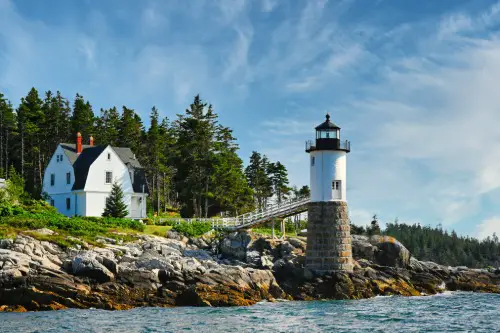
Isle au Haut offers the rugged charm of Acadia National Park without the swarms of tourists that clog nearby Bar Harbor, according to Sara B. Franklin from Travel + Leisure. This remote island is half protected parkland and half private property, with only a few dozen year-round residents. It’s reached by a seasonal mailboat from Stonington, and once there, it’s just you, the rocky trails, and the Atlantic crashing at your feet. Visitors who venture here are usually hikers, painters, or introverts—and that’s exactly how the locals like it.
There are no hotels or nightlife, just a scattering of homes, a lighthouse, and the beloved Duck Harbor Campground. The trails lead to cliffside views, old forests, and some of Maine’s most hauntingly quiet beaches. It’s a place where fog and pine mix in the air, and your phone is unlikely to buzz with anything other than sea breeze. The people who live here year-round prefer the silence—and would love for you to forget it exists.
2. Sapelo Island, Georgia
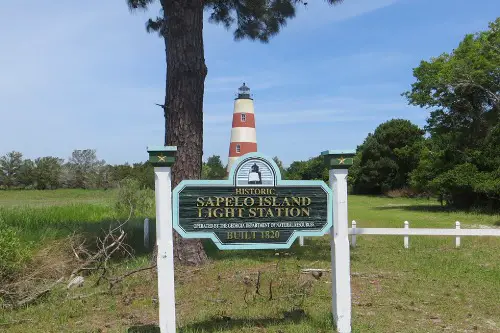
Sapelo Island sits quietly off Georgia’s coast, accessible only by a state-run ferry or private boat. It’s home to the Gullah-Geechee community of Hog Hammock, a group descended from West African slaves who’ve preserved their language, culture, and connection to the land for centuries, according to Chandelis Duster from CNN. There are no hotels or bustling beach towns—just a handful of guesthouses and a raw, untouched landscape. With its marshes, dunes, and winding dirt roads, Sapelo feels like the Deep South paused in time.
Visitors come for the solitude and stay for the stories—tabby ruins, 19th-century plantation remains, and prehistoric shell rings tell of lives lived long before tourists arrived. The island also houses a marine research station, which occasionally offers guided educational tours. But for the most part, Sapelo remains fiercely private and quiet. The locals wouldn’t mind keeping it that way.
3. Santa Rosa Island, Florida
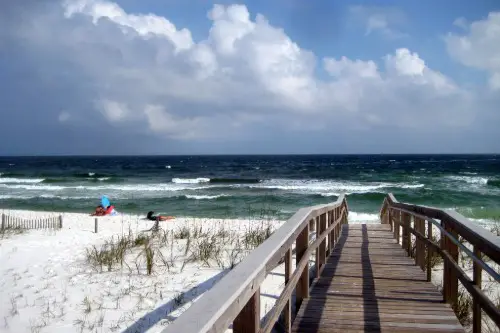
While tourists flock to Destin or Pensacola Beach, locals quietly enjoy the magic of Santa Rosa Island, where protected dunes stretch for miles, according to Dusty Ricketts from The Destin Log. This barrier island is largely part of the Gulf Islands National Seashore, shielding it from the high-rise condos and crowded boardwalks common in other Florida hotspots. The beaches are pristine and often nearly empty, with emerald waters lapping quietly at the shore. Dolphins are frequent visitors, as are sea turtles and shell collectors.
Navarre Beach, the island’s best-kept secret, offers low-key vibes and long, quiet evenings. The fishing pier is the longest in Florida, but you won’t find flashy bars or spring break chaos here. Locals enjoy kayaking the calm bayside or watching the stars without city lights. To them, Santa Rosa isn’t a tourist destination—it’s a sanctuary.
4. Blakely Island, Washington
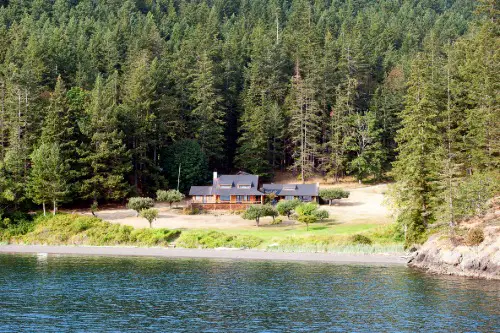
Blakely Island floats quietly in the San Juans, unknown even to some locals in the Pacific Northwest. There are no public ferries—just private planes, boats, and an airstrip used by those who call this island their escape. It’s forested, misty, and completely off-grid for most visitors. If you’re not invited, chances are you won’t find a way in.
A tiny general store and a marina serve the few part-time and seasonal residents. There are no commercial attractions or events—just hiking trails, the sound of waves, and the occasional bald eagle overhead. People come here to disappear, not to sightsee. The residents have no interest in being “discovered.”
5. Cumberland Island, Georgia

Cumberland Island is wild in all the right ways—wild horses roam its beaches, and ruins of Carnegie-era mansions lie half-swallowed by forest. Access is tightly controlled, with a limited number of daily ferry passengers allowed from the mainland. Visitors step off the boat into another world: towering oaks draped in Spanish moss, 17 miles of unspoiled beach, and a total lack of modern distractions. You won’t find shops or streetlights—just nature and history in heavy doses, according to the Georgia Conservancy.
Camping is a popular option, though those looking for something cushier can stay at the island’s lone inn, Greyfield. Bikes are the main mode of travel, and there’s no Wi-Fi or phone signal for miles. It’s the kind of place that changes you with its quiet intensity. Locals and conservationists work hard to keep it protected—and secret.
6. Dry Tortugas, Florida
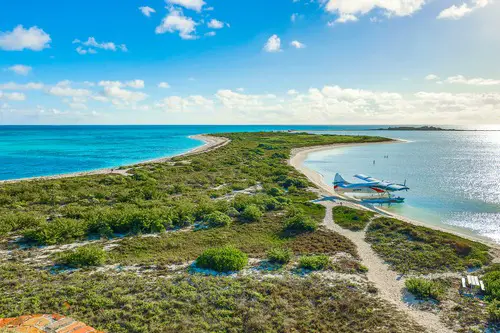
Way out in the Gulf of Mexico, the Dry Tortugas sit isolated and otherworldly—reachable only by boat or seaplane from Key West. The centerpiece is Fort Jefferson, a massive brick fortress surrounded by teal water and coral reefs. The snorkeling here is unmatched, and the lack of crowds makes it feel like you’re in on a secret Caribbean getaway. Most people come for a day—but the smart ones camp overnight under star-strewn skies.
There are no services, no cell towers, and no hotels—just sandy campsites and endless horizon. Birdwatchers flock here during migration, and divers explore nearby shipwrecks with reverence. Locals and park rangers alike prefer to keep the buzz down—it’s best when left undisturbed. In a state known for its crowds, Dry Tortugas feels like Florida’s final frontier.
7. Beaver Island, Michigan
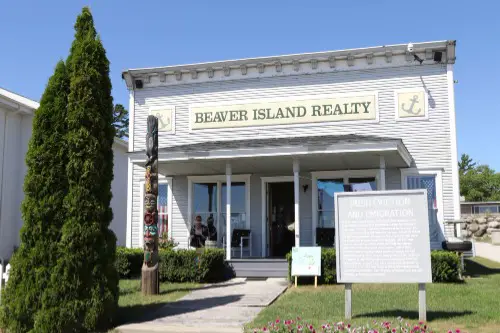
Beaver Island is where Great Lakes charm meets true remoteness. Sitting in Lake Michigan, it has a fascinating backstory—including a short-lived Mormon kingdom led by a self-declared king in the 1800s. Today, it’s a mix of history, dense forests, inland lakes, and untouched beaches that locals are fiercely proud of. The island has its own airport and ferry but remains a whisper compared to Mackinac.
Visitors often come for kayaking, birding, and the simple joys of island life. There’s an annual music festival, historic lighthouses, and a museum with old printing presses and local lore. When the sun hits just right, the beaches almost glow—but it’s never crowded. Islanders prefer it that way, and most are fine with you not finding out.
8. Whidbey Island, Washington
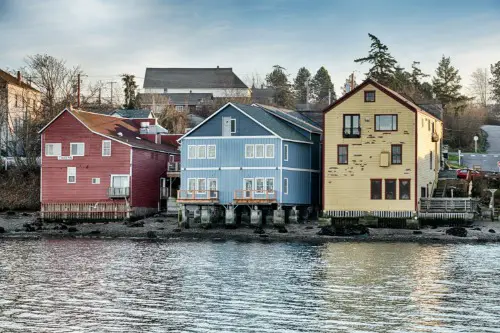
Just north of Seattle, Whidbey Island offers sweeping views, artisan towns, and dramatic coastlines—but still feels like a hidden gem to outsiders. It has a thriving arts scene, cozy bakeries, and nature preserves all packed into one easy-to-love island. The Deception Pass Bridge offers stunning photo ops, while hidden coves and driftwood-covered beaches make for perfect afternoon retreats. Unlike more commercial islands, Whidbey balances tourism with tranquility.
Locals frequent weekly farmers markets, theater performances, and beach bonfires without fanfare. You can kayak one moment and sip wine at a family-owned vineyard the next. There’s military history, cultural pride, and a community vibe that resists overexposure. Whidbey is close enough to be convenient—yet just far enough to keep its best parts private.
9. Fire Island, New York
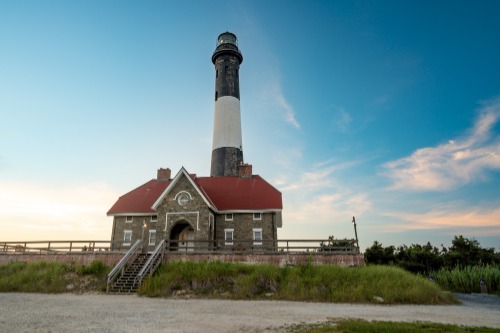
Despite its proximity to New York City, Fire Island remains one of the East Coast’s best-kept secrets—especially if you steer away from the better-known communities. This 32-mile-long barrier island is entirely car-free, meaning life moves at a slower, sandier pace. Each of the 17 communities has its own feel—some are sleepy and family-oriented, others offer vibrant nightlife and LGBTQ+ pride. Yet all share wide beaches, pine forests, and a sense of escape.
The Sunken Forest, a rare maritime holly ecosystem, is a surreal boardwalk stroll unlike anything else on Long Island. Most people bike or walk everywhere, and there are no chains or franchises in sight. Local businesses and residents alike cherish the independence and simplicity. It’s New York—but not as you know it.
10. Shackleford Banks, North Carolina
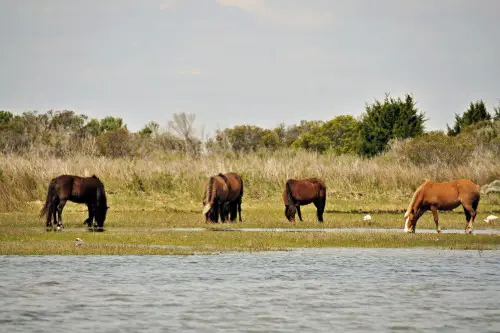
Shackleford Banks is where wild horses run free and cell service is a distant memory. Part of the Cape Lookout National Seashore, this barrier island is only accessible by ferry or private boat. There are no hotels, restaurants, or even restrooms—just sand, sea, and a herd of feral Spanish mustangs believed to have descended from shipwreck survivors. Beachcombers often find rare shells or catch glimpses of dolphins offshore.
The untouched beauty is matched by an eerie stillness that feels rare in today’s world. It’s not unusual to have entire stretches of beach to yourself. Locals from nearby Beaufort know how special this place is and prefer to keep it lightly trafficked. For many, it’s less a destination and more a sacred space.
11. Angel Island, California
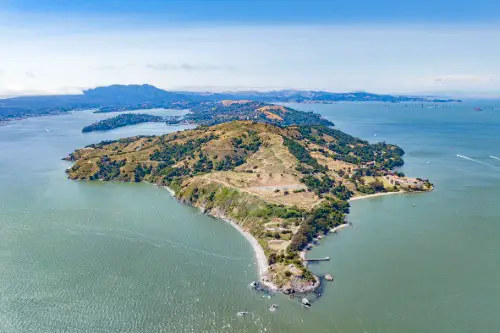
Angel Island is often overshadowed by its infamous neighbor, Alcatraz—but it offers an entirely different, and quieter, experience. Located in the heart of San Francisco Bay, it has some of the best views of the city skyline, Golden Gate Bridge, and Marin Headlands. Once a military post and immigration station, its history is as layered as its landscape. You can hike or bike to Mount Livermore for a 360-degree view that rivals anything in California.
The island is also a protected state park, meaning no cars, minimal development, and a natural rhythm that’s hard to find in the Bay Area. Locals love the ferry ride from Tiburon or San Francisco, followed by picnics and tram tours. Despite its proximity to the city, it remains blissfully uncrowded. And those who know about it? They aren’t exactly advertising.
12. Monhegan Island, Maine
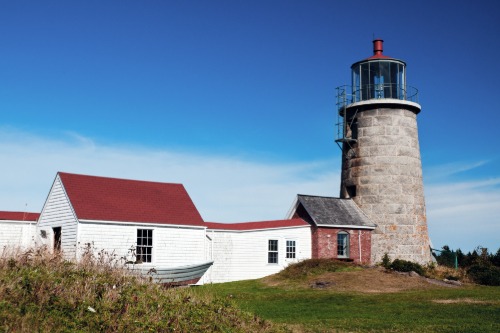
Ten miles out in the Atlantic, Monhegan Island has been attracting artists and wanderers for over a century. There are no paved roads, no chain stores, and no glitzy amenities—just sheer cliffs, dense spruce forests, and crashing waves that seem to speak in poetry. The 12-mile trail system weaves through some of the most dramatic coastal scenery in the Northeast. Painters come for the light; others come just to breathe.
The island has a small year-round population and a strong creative streak, with galleries, old inns, and lobster boats dotting the tiny harbor. Ferry service is limited, and locals are known to be warm but protective of their peace. If you’re lucky enough to visit, don’t expect fanfare. Just bring your hiking boots, a sketchbook, and a deep appreciation for quiet.


